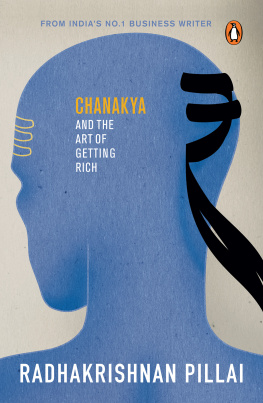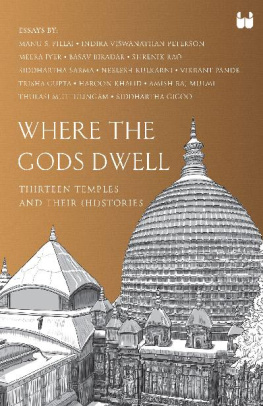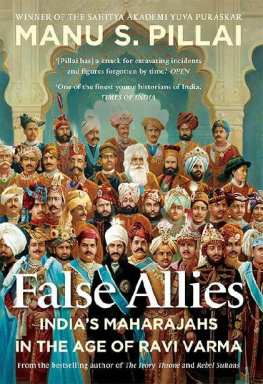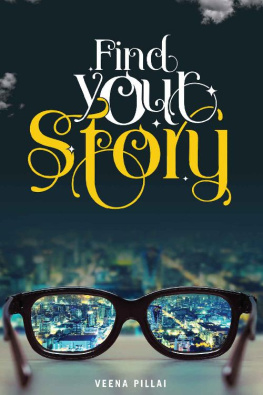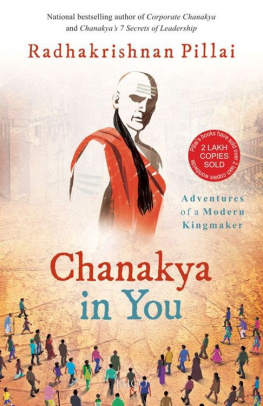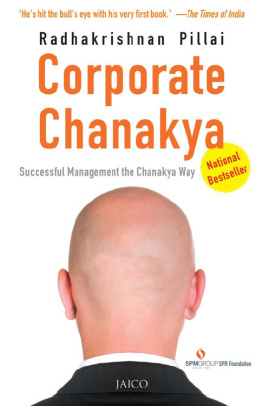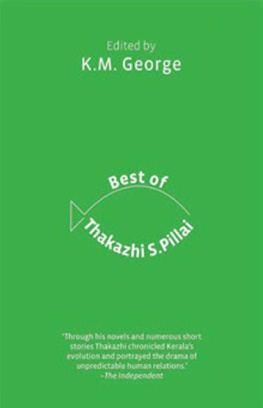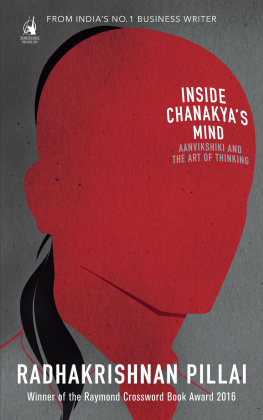
lphants du Radja de Travancor (Elephants of the Rajah of Travancore) (1848), lithograph by L.H. de Rudder based on a drawing by Prince Aleksandr Mikhailovich Saltuikov.
The Ivory Throne
Chronicles of the House of Travancore
MANU S. PILLAI

HarperCollins Publishers India
For Indrani
Contents
I n July 1497 when Vasco da Gama set sail for India, King Manuel of Portugal assorted a distinctly expendable crew of convicts and criminals to go with him. After all, the prospects of this voyage succeeding were rather slender considering that no European had ever advanced beyond Africas Cape of Good Hope before, let alone reached the fabled spice gardens of India. Da Gamas mirthless quest was essentially to navigate uncharted, perilous waters, and so it seemed wiser to invest in men whose chances in life were not especially more inspiring than in death. Driven by formidable ambition and undaunted spirit, it took da Gama ten whole months, full of dangerous adventures and gripping episodes, to finally hit Indias shores. It was the dawn of a great new epoch in human history and this pioneer knew he was standing at the very brink of greatness. Prudence and experience, however, dictated that in an unknown land it was probably wiser not to enter all at once. So one of his motley crew was selected to swim ashore and sense the mood of the natives there before the captain could make his triumphant, choreographed entrance. And thus, ironically, the first modern European to sail all the way from the West and to set foot on Indian soil was a petty criminal from the gutters of Lisbon.
For centuries Europe had been barred direct access to the prosperous East, first politically when international trade fell into Arab hands in the third century after Christ, and then when the emergence of Islam erected a religious obstacle in the seventh. Fruitless wars and bloodshed followed, but not since the heyday of the Greeks and Romans had the West enjoyed steady contact with India. Spices and other oriental produce regularly reached the hungry capitals of Europe, but so much was the distance, cultural and geographic, that Asia became a sumptuous cocktail of myth and legend in Western imagination. It was generally accepted with the most solemn conviction, for instance, that the biblical Garden of Eden was located in the East and that there thrived all sorts of absurdly exotic creatures like unicorns, men with dogs heads, and supernatural races called The Apple Smellers. Palaces of gold sparkled in the bright sun, while precious gems were believed to casually float about Indias serene rivers. Spotting phoenixes, talking serpents, and other fascinating creatures was a mundane, everyday affair here, according to even the most serious authorities on the subject. But perhaps the most inviting of all these splendid tales was that lost somewhere in India was an ancient nation of Christians ruled by a sovereign whose name, it was confidently proclaimed, was Prester John.
It was long believed that there lived in Asia a prestre (priest) called John who, through an eternal fountain of youth, had become the immortal emperor of many mystical lands. Some accounts said he was a descendant of one of the three Magi who visited the infant Jesus, while a more inventive version placed him as foster-father to the terrible Genghis Khan. Either way, Prester John was rumoured to possess infinite riches, including a fabulous mirror that reflected the entire world, and a tremendous emerald table to entertain thirty thousand select guests. Great sensation erupted across Europe in AD 1165, in fact, when a mysterious letter purportedly from the Prester himself appeared suddenly in Rome. In this he elaborately gloated about commanding the loyalties of horned men, one-eyed men, men with eyes back and front, centaurs, fauns, satyrs, pygmies, giants, cyclops and so on. After vacillating for twelve years, Pope Alexander III finally couriered a reply, but neither the messenger nor this letter were ever seen again. Luckily for Europe, the travels of Marco Polo in the thirteenth century and of Niccolo di Conti in the fifteenth painted a rather more rational picture of Asia on the whole, but they were still convinced of the presence of lost Christians there, egged on by religious fervour and the commercial incentives of breaching the monopolised spice trade.
If da Gama and his men, weighed down by centuries of collective European curiosity and imagination, anticipated the legendary Prester as they stepped on to the shores of Kerala in India, they were somewhat disappointed. For when envoys of the local king arrived, they came bearing summons from Manavikrama, a Hindu Rajah famed across the trading world as the Zamorin of Calicut. The city itself was an archetype of commercial prosperity and medieval prominence; it hosted merchants and goods from every worthy trading nation in its lively bazaars, its people were thriving and rich, and its ruler potent enough to preserve his sovereignty from more powerful forces on the Indian peninsula.
Da Gama and his men received one courtesy audience from the Zamorin and they were greatly impressed by the assured opulence of his court. But when they requested an official business discussion, they were informed of the local custom of furnishing presents to the ruler first. Da Gama confidently produced twelve pieces of striped cloth, four scarlet hoods, six hats, four strings of coral, a case of six wash-hand basins, a case of sugar, two casks of oil, and two of honey for submission, only to be jeered into shame. For Manavikramas men burst out laughing, pointing out that even the poorest Arab merchants knew that nothing less than pure gold was admissible at court. Da Gama tried to make up for the embarrassment by projecting himself as an ambassador and not a mere merchant, but the Zamorins aides were not convinced. They bluntly told him that if the King of Portugal could afford only third-rate trinkets as presents, the mighty Zamorin had no interest whatever in initiating any diplomatic dealings on a basis of equality with him. Manavikrama, it was obvious, could not care less about an obscure King Manuel in an even more obscure kingdom called Portugal, and with a pompous flourish of royal hauteur, he brushed aside da Gamas lofty ambassadorial claims.
The Zamorin was not unreasonable, however. He clarified that the Portuguese were welcome to trade like ordinary merchants in the bazaar if they so desired, even if no special treatment was forthcoming. Da Gama, though livid at his less-than-charming reception, had no option but to comply, having come all the way and being too hopelessly outnumbered to make a military statement to the contrary. And so his men set up shop in Calicut, under the watchful eyes of the Arabs, peddling goods they had brought from Europe; goods, they quickly realised, nobody really wanted here in the East. The hostility of the Arabs did not help either; for they, recognising a threat to their commercial preponderance, initiated a policy of slander, painting him and his men as loathsome, untrustworthy pirates. When complaints about this were made to the Zamorin, they were met with yawning disdain, not least because the Portuguese had precious little to contribute to business or to the royal coffers. The first European trade mission, thus, was a resounding flop as far as the Indians were concerned, and when da Gamas fleet departed Calicut three months later, they left behind a distinctly unflattering impression on the locals.
In Europe, however, the expedition was received as a great success, as it had finally broken the thousand-year Arab monopoly, and also because the few goods da Gama had successfully bartered in Calicut fetched sixty times their price in Western markets. In March 1500, therefore, King Manuel assembled a second armada to go to India. This time they were better prepared and more confident, led by the redoubtable Pedro Alvarez Cabral. It also helped that by the time they arrived in Calicut, the forbidding Manavikrama had died and a younger, more amenable prince was parked on the throne. The Portuguese got off to a more promising start, as a result. But their enthusiasm waned when they realised that demand for European goods continued to be feeble at best. In the spice auctions too, wealthy Arabs consistently outbid them and Cabrals ships were not filling up as expected. As the weeks passed he began to grow impatient and belligerent. The policy of defamation unleashed by the Arabs incensed him, and he suspected they were colluding with local suppliers to prevent the sale of spices to the Portuguese. At one point, then, Cabral sacked an Arab vessel, provoking retaliation from Muslim merchants who burned down his warehouse and killed between fifty and seventy Portuguese men. Cabral took to the safety of the sea and looted every ship he could find and, in what was meant as a lesson to the Zamorin, bombarded Calicut from afar for an entire day, killing nearly 600 people.
Next page


